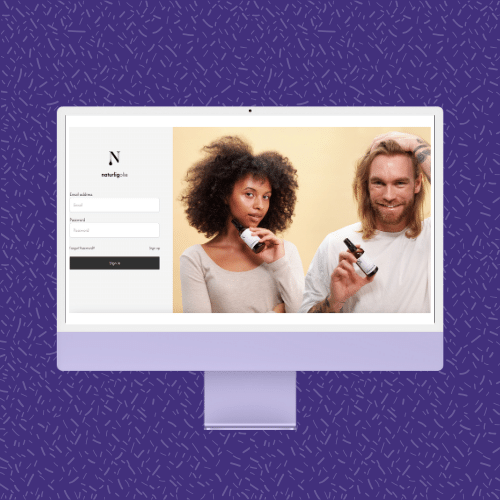6 Essential Steps You Need to Take When Launching A Beauty & Skincare B2B eCommerce

The beauty and skincare industry is experiencing a major shift, propelled by the surge in B2B ecommerce. As sustainability becomes a priority, brands are adapting their strategies to meet the demands of an eco-conscious market.
This guide delves into how beauty and skincare brands can harness B2B ecommerce to drive sustainable growth and satisfy the changing requirements of retailers and distributors.
It emphasizes the importance of integrating eco-friendly practices with digital commerce, highlighting the evolving trends and consumer expectations in the beauty sector.
1. Understanding The Beauty and Skincare B2B Market

To succeed in the B2B beauty and skincare market, it’s crucial to understand the different needs and purchasing behaviors of businesses in this sector. This involves diving deep into industry trends, such as the rising demand for eco-friendly and organic products, and comprehending the factors that influence purchasing decisions across various segments.
It’s also essential to recognize the value of sustainable practices and how they impact buyer choices in this industry. Employing tools like market analysis reports and customer feedback is vital to accurately identify and cater to the unique demands of the B2B beauty and skincare market. Keeping up-to-date of evolving trends and adapting your strategies accordingly can set your brand apart in the competitive beauty landscape.
2. Building a Robust B2B eCommerce Platform
Your B2B ecommerce platform should cater to the specific needs of business buyers in the beauty and skincare industry. Turis offers a customizable platform that can be tailored to the unique needs of beauty and skincare businesses. Its user-friendly interface simplifies the purchasing process for your clients, while its integration capabilities ensure smooth operation with your existing business systems. Key considerations include:
- Customizable Bulk Ordering: Offer features that allow easy bulk ordering and customization options for large orders.
- Tailored Pricing Models: Implement flexible pricing strategies, including volume discounts and exclusive deals for repeating clients.
- Seamless Integration: Ensure your platform can integrate smoothly with various business systems, including ERP and CRM, for streamlined operations.
- User-Friendly Interface: Though your audience is businesses, a user-friendly, intuitive interface remains crucial for a smooth purchasing experience.
- Dedicated B2B Storefront: Create a storefront specifically designed for B2B transactions, facilitating a more tailored shopping experience for business clients and accommodating their unique buying patterns and preferences.

3. Optimizing for Mobile eCommerce
In B2B transactions, decision-makers often research and make purchases on the go. Optimize your platform for mobile devices to ensure a seamless experience. This includes responsive design, simplified navigation, and quick loading times to accommodate busy professionals in the beauty industry.
- Responsive Design: Your website should automatically adjust to fit the screen size of various devices, from desktops to smartphones. This ensures a seamless browsing experience regardless of the device used.
- Simplified Navigation: Mobile users prefer straightforward, easy-to-use menus. Opt for a clean, uncluttered design with clear categories and a search bar for quick navigation.
- Quick Load Times: Mobile users expect fast-loading pages. Optimize images and streamline your site’s code to speed up load times, thereby reducing bounce rates.
- Mobile-Friendly Checkout: Streamline the checkout process for mobile users. This includes larger form fields, simplified payment options, and the ability to save payment information for future purchases.
- Touch-Friendly Interfaces: Ensure that all buttons and links are easy to tap with a finger. Avoid small, cramped links that are difficult to select on a touchscreen.
- Test and Iterate: Regularly test your mobile site’s performance and user experience. Tools like Google’s Mobile-Friendly Test can provide insights into how well your site performs on mobile devices.
4. Leveraging Digital Marketing and SEO
Digital marketing and SEO are vital in reaching a wider B2B audience in the beauty and skincare sector. Develop a digital marketing strategy that includes:
- Content Marketing: Produce high-quality, informative content that addresses B2B needs, such as industry insights, product usage guides, and case studies.
- SEO for B2B: Focus on keywords relevant to the B2B beauty market, and optimize your site to rank higher in search results for these terms.
- Social Media for Business Networking: Utilize platforms like LinkedIn for networking and establishing industry connections.

5. Embracing Sustainable Beauty and Skincare Practices
In the skincare industry, sustainability is more than a trend; it has become an essential aspect of modern business practices. As a B2B ecommerce brand, embracing and highlighting your commitment to sustainable practices is crucial, not only for aligning with consumer values but also for contributing to environmental and social responsibility.

Eco-Friendly Beauty Product Lines
Developing and promoting a range of products that are environmentally friendly is key. This includes skincare items made with organic, natural ingredients, and free from harmful chemicals. Vegan or cruelty-free products are increasingly important to both retailers and consumers. Showcasing these sustainable products effectively on your platform makes them easily identifiable and accessible for B2B buyers who prioritize eco-friendly options.
Sustainable Packaging and Shipping
Rethinking packaging and shipping processes to minimize environmental impact is vital. Using biodegradable or recyclable packaging materials and implementing carbon-neutral shipping practices not only contributes to environmental preservation but also resonates with eco-conscious clients. Efficiently managing inventory and logistics ensures that these sustainable choices are reflected in your supply chain.
Transparency and Certifications
Transparency is a key demand in today’s market. Clearly communicate your brand’s commitment to sustainability, including any certifications like Fair Trade, Ecocert, or Leaping Bunny. Providing detailed information about the sustainability credentials of your products, including certification logos and detailed descriptions, helps inform B2B clients about the eco-friendly nature of your offerings.
Educating Your B2B Clients in The Beauty and Skincare Market
Educating B2B clients about the benefits and importance of sustainable beauty products is important. Providing them with necessary information and marketing materials that highlight the eco-friendly aspects of your products aids them in making informed decisions and promoting these values further.
Embracing sustainable practices in your B2B ecommerce operations contributes to a healthier planet and positions your brand as a forward-thinking leader in the industry. Integrating these practices seamlessly into your business model enhances your appeal to environmentally conscious B2B clients and sets a standard for sustainability.

Naturgolie’s Success Story
One of our clients, Naturgolie, stands as a prime example of how effective B2B workflow optimization can propel a business forward. Specializing in organic skincare alternatives, Naturgolie combines timeless aesthetics with natural ingredients, embodying the essence of classic Nordic design and sustainable packaging. Their high-quality products not only cater to the growing demand for organic skincare solutions but also reflect a deep commitment to environmental responsibility.
6. Implementing Secure and Flexible Payment Options
In the world of B2B ecommerce, especially in the beauty and skincare industry, providing a variety of secure and flexible payment options is essential. Business clients have diverse needs and preferences when it comes to payments, and catering to these needs can significantly enhance the customer experience and foster long-term business relationships.

Diverse Payment Methods: Offer a spectrum of payment options to accommodate different business requirements. This can range from traditional methods like credit terms and direct bank transfers to more modern solutions such as online payment gateways and digital wallets. The ability to offer a variety of payment terms, including net 30 or net 60, can also be beneficial for building trust and convenience for your B2B clients.
Customizable Credit Solutions: Consider providing customizable credit solutions tailored to each client. This approach can be particularly attractive in the B2B sector, where order sizes and payment capacities can vary greatly. Flexible credit options can help smaller retailers or startups grow while ensuring a steady flow of orders for your business.
Enhanced Payment Security: Security in online transactions is a top priority. Ensure that your ecommerce platform employs the latest in encryption and security protocols to protect sensitive financial information. Compliance with standards like PCI DSS (Payment Card Industry Data Security Standard) is crucial to maintaining the integrity and trustworthiness of your payment processes.
Streamlined Checkout Process: A streamlined, user-friendly checkout process can significantly reduce cart abandonment rates. Simplify the payment process with easy-to-navigate interfaces, clear instructions, and minimal steps. Additionally, offering the ability to save payment information securely for future transactions can expedite repeat orders, enhancing overall client satisfaction.

